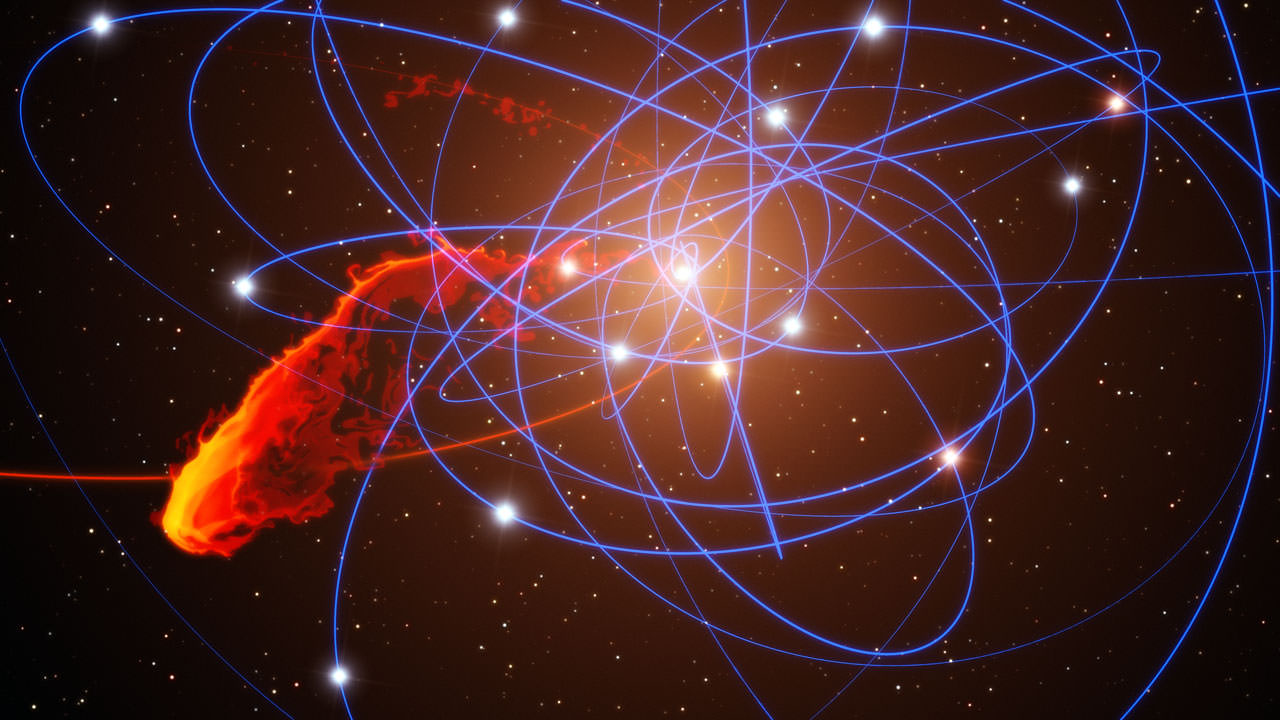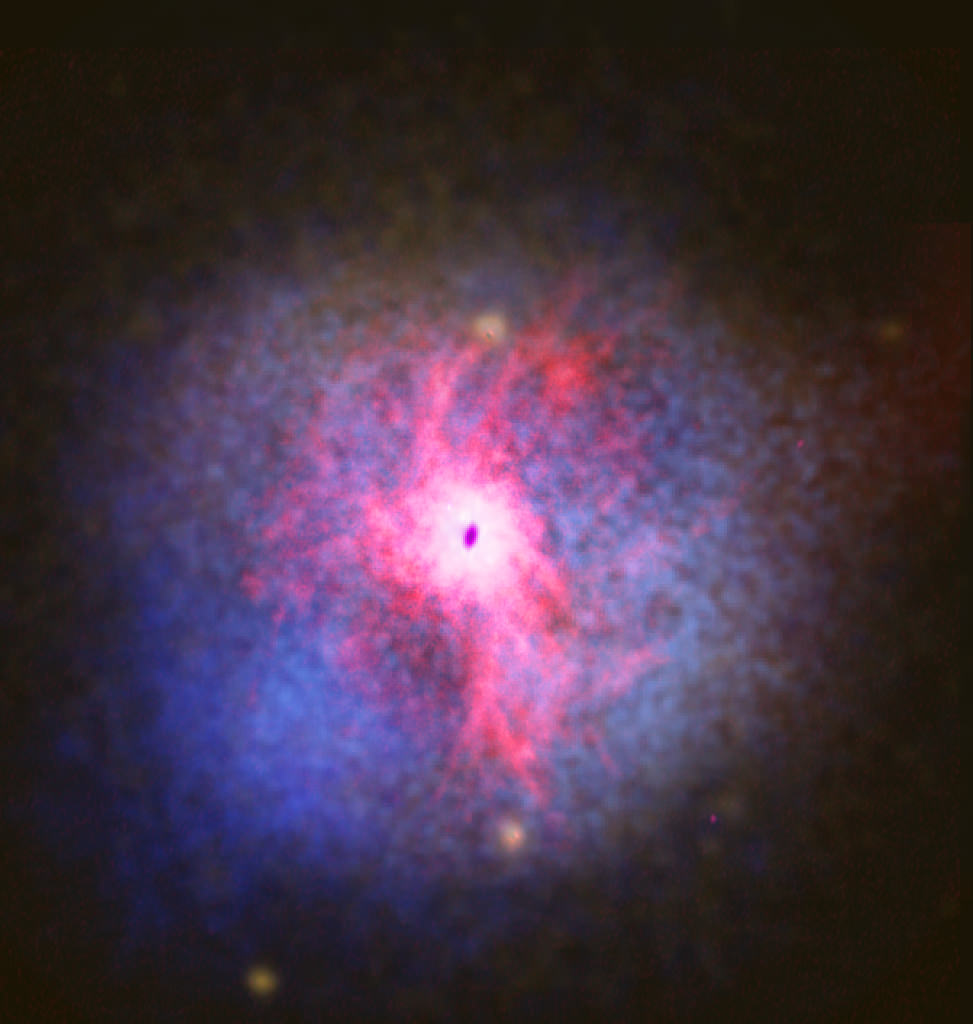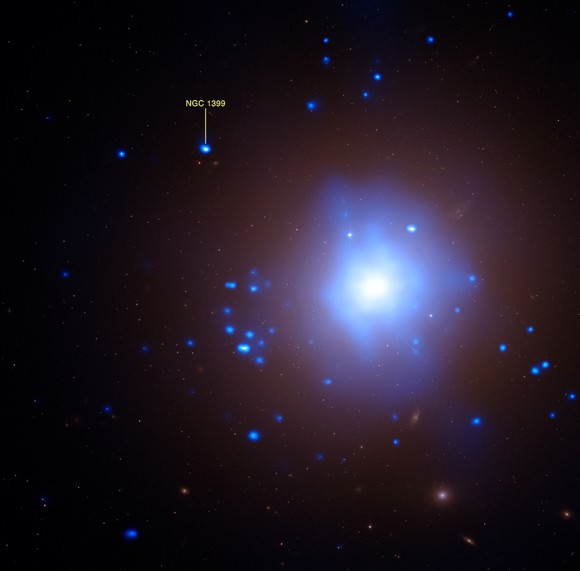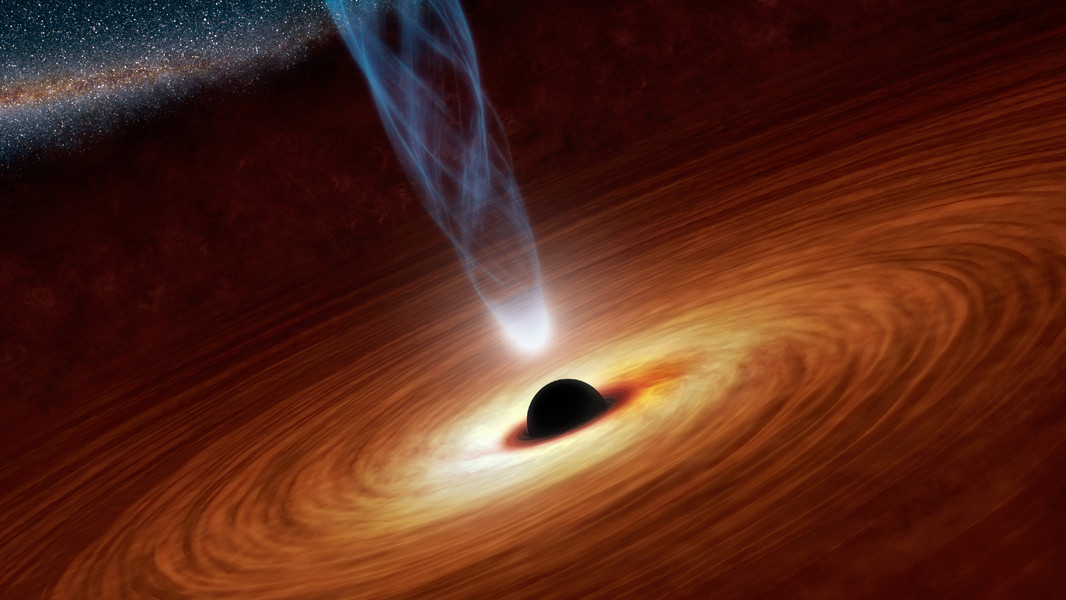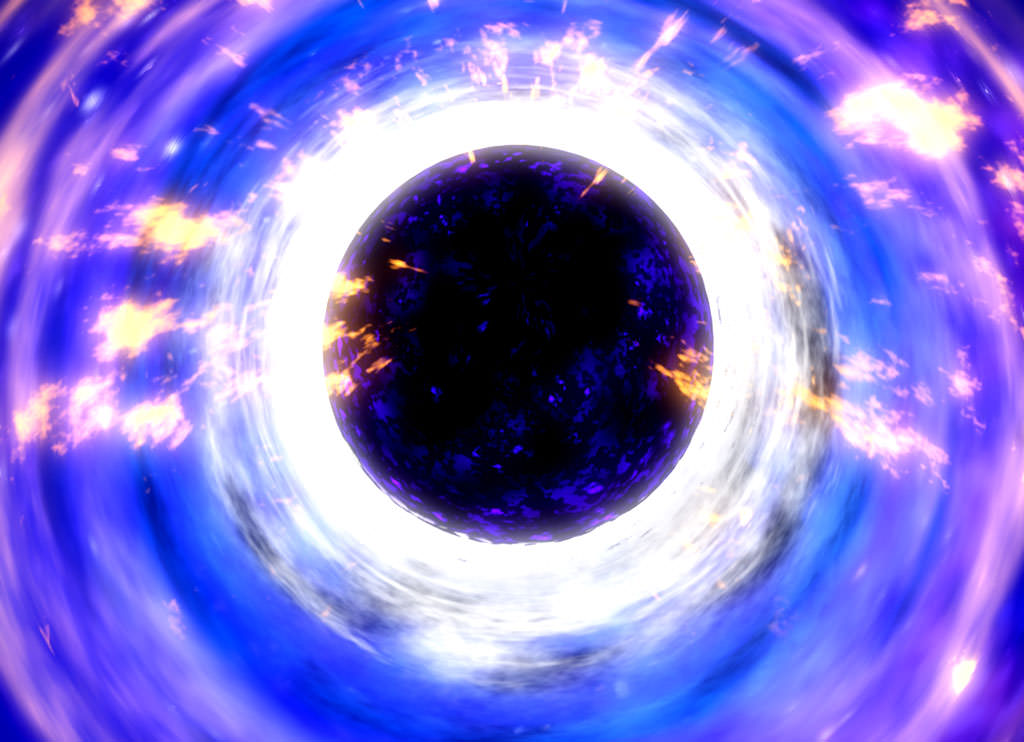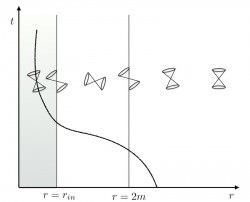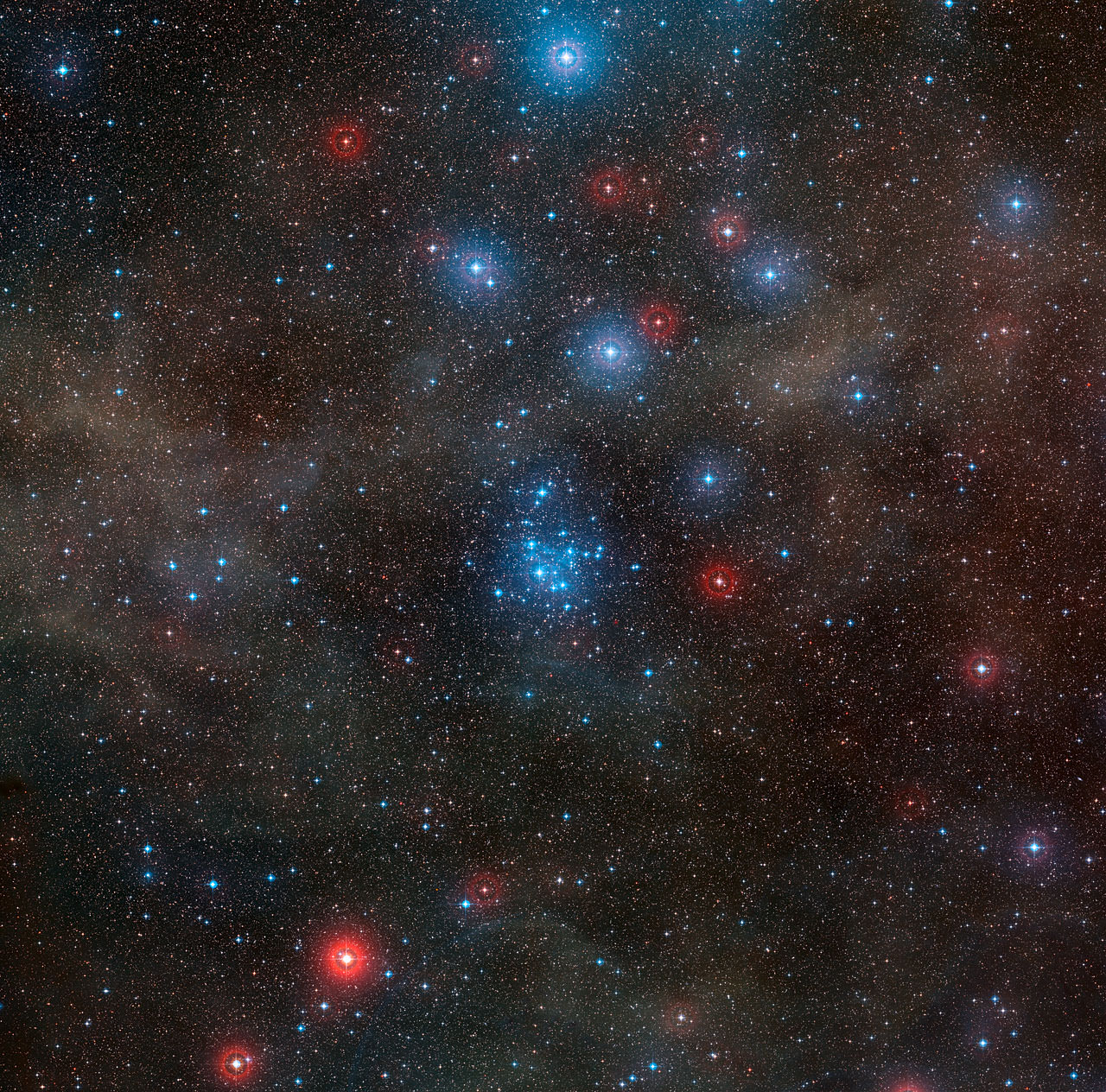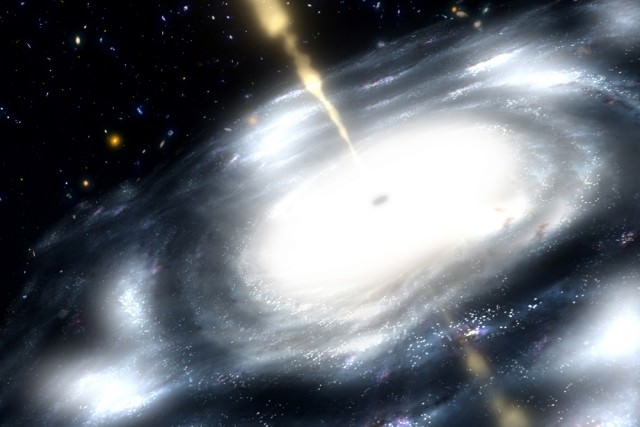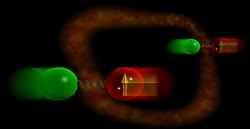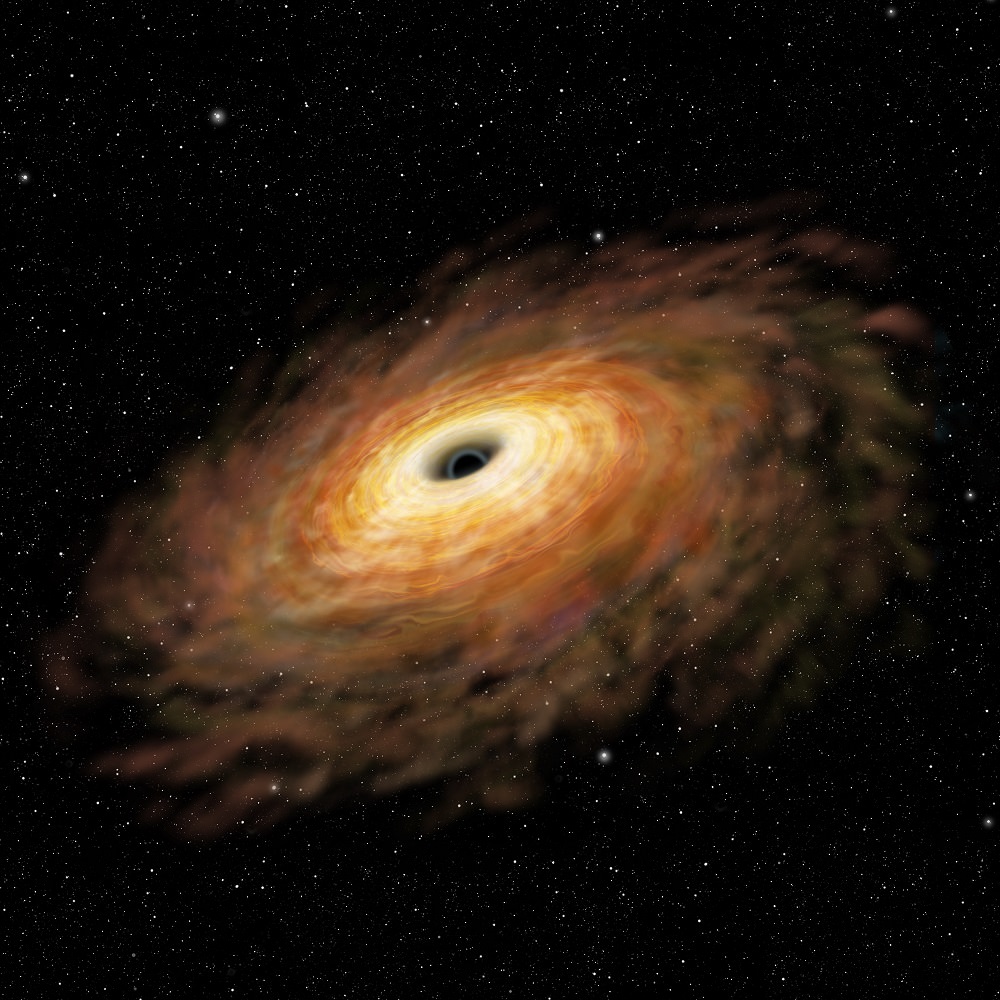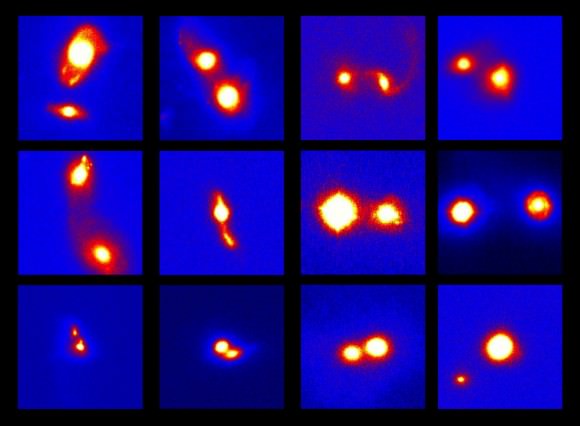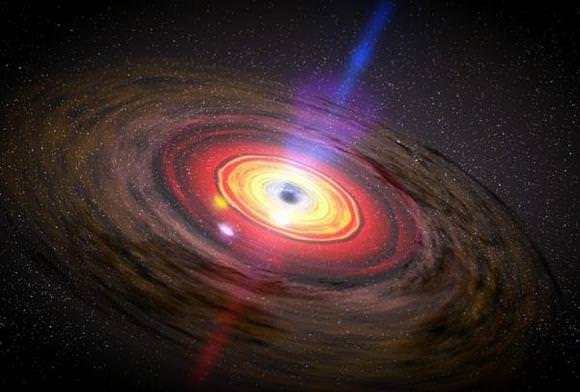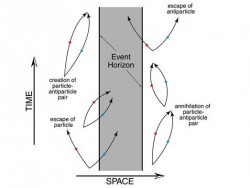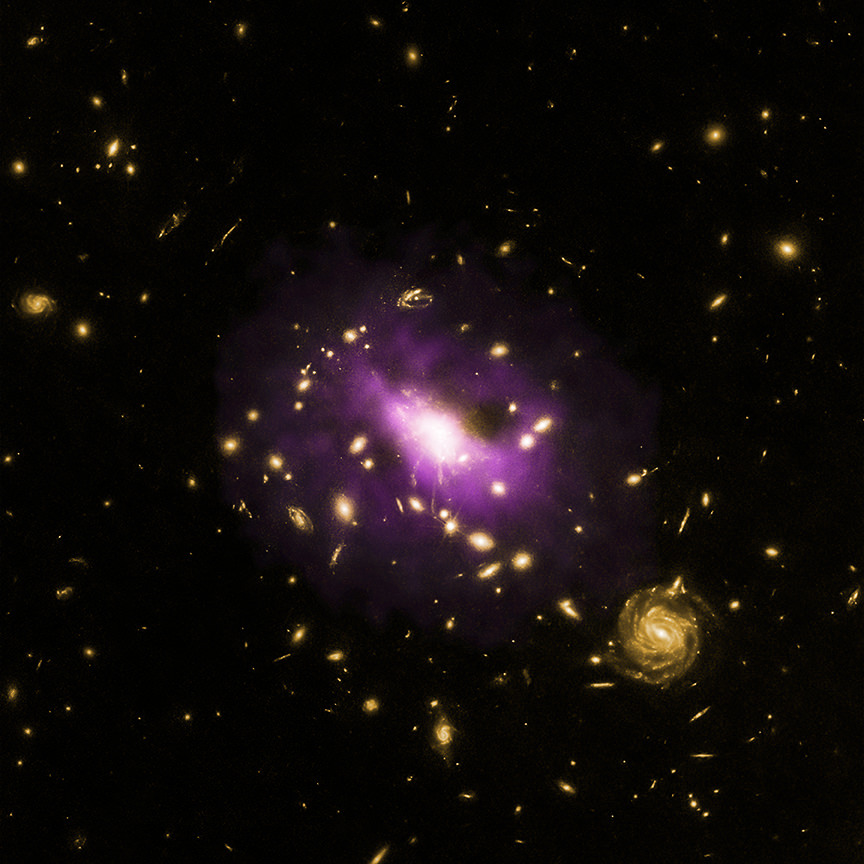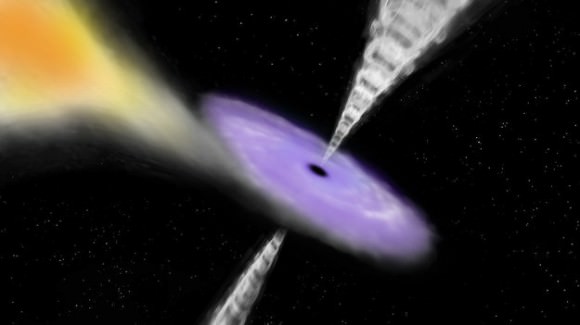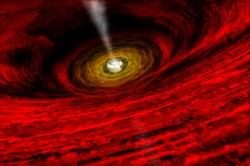Observatories around the world and in space have been honed-in on the center of our galaxy, looking for possible fireworks to erupt as a mystery object heads towards our galaxy’s supermassive black hole. The object – called G2 – is being watched in an intense observing campaign across all wavelengths with multiple observatories. This is the first time astronomers have been able to watch an encounter with a black hole like this in real time, and the hope is that watching G2’s demise will reveal not only what this object actually is, but also provide more information on how matter behaves near black holes and how supermassive black holes “eat” and evolve.
“We’re indeed working on new observation of G2 right now,” astronomer Leo Meyer from UCLA told Universe Today, “and we’re in a position to make a significant new statement about it very soon.”
G2 was first spotted in 2011 and was quickly deemed to be heading towards our galaxy’s supermassive black hole, called Sgr A*. Astronomers estimate G2 has a mass roughly three times that of Earth (versus the black hole, which is 4 million times the mass of our Sun). G2 is not falling directly into the black hole, but it will pass Sgr A* at about 100 times the distance between Earth and the Sun. But that’s close enough to predict that G2 is doomed for destruction.
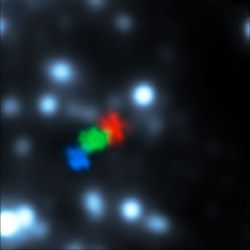
Shown here are VLT observations from 2006, 2010 and 2013, colored blue, green and red respectively showing a gas cloud being ripped apart by the supermassive black hole at the center of the galaxy. Credit: ESO/S. Gillessen.
By last July, observations from the Very Large Telescope showed the object being stretched over more than 160 billion kilometers by the black hole’s extreme gravitational field.
Closest approach was expected to have happened by now (April 2014), but nobody’s talking publicly yet about what has been observed, although Meyer hinted news would be coming soon.
The last notification on the G2 Gas Cloud Wiki page (put together by Stefan Gillessen of the Max Planck Institute in Germany, who has lead several observing runs) was posted on April 21, 2014. This notification reported no strong flare of Sgr A* although it was around the expected time peri-center passing for G2, but there has been a rather constant radio detection of 22 GHz at that location with Japanese VLBI Network.
Northwestern University’s Daryl Haggard said in an early April 2014 press release that recent Chandra observations do not show any enhanced emissions in X-rays, adding “from the X-ray perspective, the gas cloud is late to the party, but it remains to be seen whether G2 is fashionably late or a no show.”
And that points to one question about G2: what is it exactly? Haggard called it a gas cloud, but UCLA astronomer Andrea Ghez said there’s actually a debate about what it is.
“There are two camps on that,” she told Universe Today. “Some people have suggested this is a gas cloud. But I think it’s a star. Its orbit looks so much like the orbits of other stars. There’s clearly some phenomenon that is happening, and there is some layer of gas that’s interacting because you see the tidal stretching, but that doesn’t prevent a star being in the center.”
Some astronomers argue that they aren’t seeing the amount of stretching or “spaghettification” that would be expected if this was just a cloud of gas.

Meyer said the stretching from the object tidally reacting to the back hole clearly points to gas, but that doesn’t tell you if something is hidden inside it or not.
“While it is getting stretched, the luminosity is staying surprisingly constant, and that is puzzling the theorists,” Meyer said.
Another puzzle is the timing of when G2’s closest approach would take place. When news of G2 first broke, it was thought that the time of closest approach to the black hole would be in mid-2013. But further observations determined that that estimate was not accurate and Spring 2014 was actually when closest approach would occur.
“This makes this year’s observations so relevant and our upcoming report significant — especially regarding the issue whether there is a star inside the cloud or not,” Meyer told Universe Today via email.
But, Ghez said, we’ll soon know the answer of what this object is.
“This is just the process of science and it’s interesting – because we’ll have a limited set of observations to find out what this is,” she said. “And it may be a gas cloud or it may be a star, but it’s pretty exciting in astronomy to have an event that everybody gets to line up and buy tickets for.”
Another question is if there actually will be any “fireworks” – as Meyer called it – when G2 meets its ultimate doom as it gets shredded and possibly eaten by the black hole. As the object approaches the black hole and gets disrupted, the gas will rain down onto the back hole, increasing the black hole’s mass, possibly making it brighter. Will this create a “flash” or possibly even a jet from the black hole?
“We don’t know, and there are a lot of uncertainties,” Meyer said at the American Astronomical Society meeting in January 2014. “This is something we haven’t seen before, and even if we don’t know if something will happen or not, it still is worth looking. It’s a unique opportunity to learn about fundamental astrophysics. Even if it’s not super-spectacular, we can still learn things.”
Meyer hinted in January that astronomers might not see much at all.
“Whatever gas might end up in the black hole might get smeared out so much that the amount of mass that gets dumped into the back might be very little,” he said. “This dietary supplement might be very little, like a pea or something!”
Our galaxy’s supermassive black hole has long been fairly inactive, but in 2013, NASA’s Swift Gamma-Ray Burst mission detected the brightest flare ever observed from Sgr A*. However, it’s not certain if this burst was related to G2 or not.
Ghez has said these observations of G2 are similar to the search for extraterrestrial life: the odds to see something are against you, but you still have to look, because if you find something, it will be spectacular.
This is exciting for astronomers, since they usually don’t get to see events like this take place “in real time.” In astrophysics, timescales of events taking place are usually very long — not over the course of several months. But it’s important to note that G2 actually met its demise around 25,000 years ago. Because of the amount of time it takes light to travel, we can only now observe this event which happened long ago.
Unfortunately, this event is beyond what amateur astronomers can observe.
“We really need to use the worlds’ most advanced observatories to observe this,” Meyer said in January, “as we have to go to multiple wavelengths and use adaptive optics since the galactic center is not visible to light in seen by our eyes, and you need a high angular resolution to see it.”

